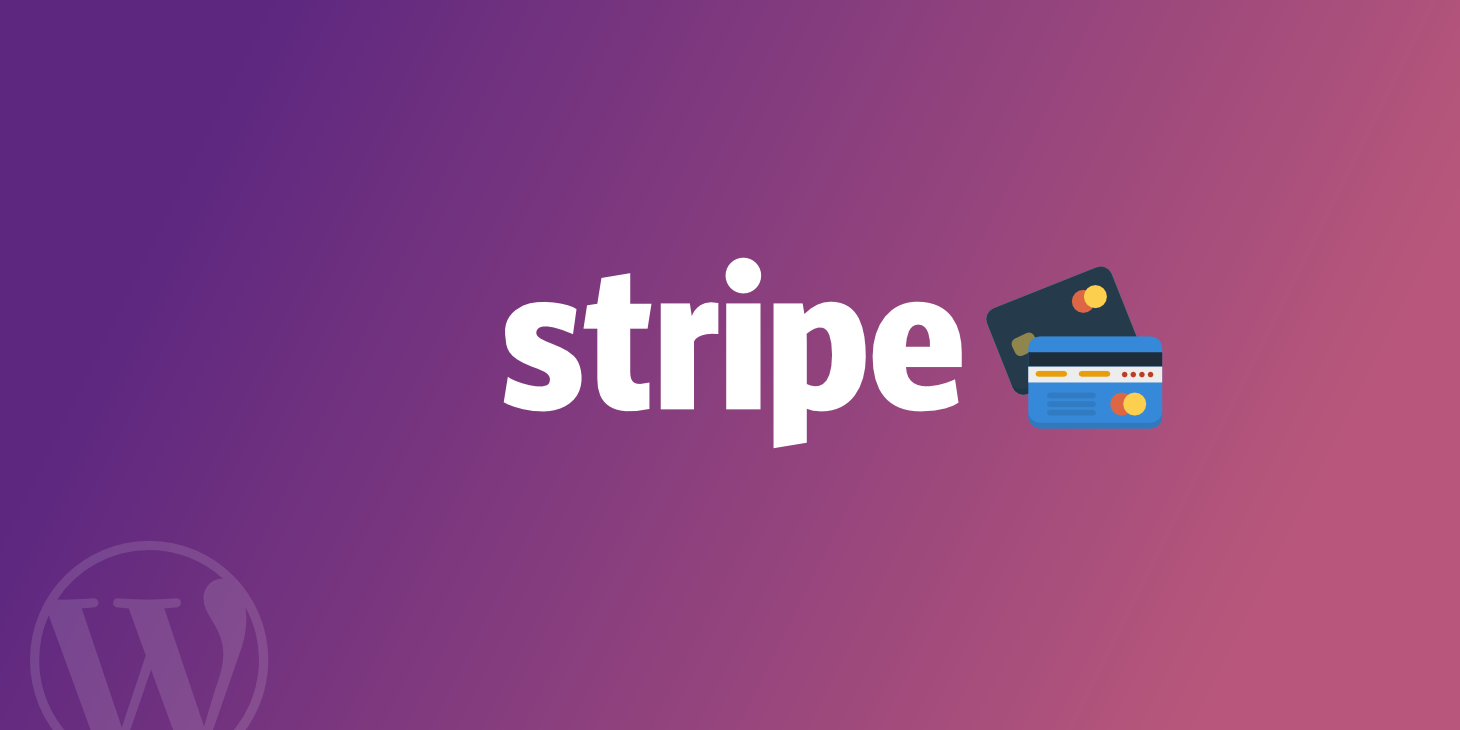Top players in the payment gateway industry are always advancing so they can be number one. After all, there are more ecommerce store owners than ever these days, and they all need a reliable way to collect payments from customers.
Two of the most well-established payment gateway options in the market today are Stripe and Square. Both offer businesses easy ways to process payments made online, leading technology, and plenty of ecommerce tools to make things simple for ecommerce store owners trying to run a business and make money.
Stripe and Square have their own unique set of features designed to serve very different needs. And quite frankly, this can make deciding which payment gateway to use harder than you’d like it to be. That’s why we’re going to run a Stripe vs Square comparison, so you can make a data-driven decision for your small business.
Are you ready? Let’s take a look.
Stripe vs Square: What Do They Do?
Stripe was founded in 2011 and is a payment gateway that lets you accept credit card payments (in person or online) by transferring money between your merchant account and a payment processor. This is done using a physical credit card terminal or an online processor.
Still find this concept confusing? Here’s a visual representation to help you out:
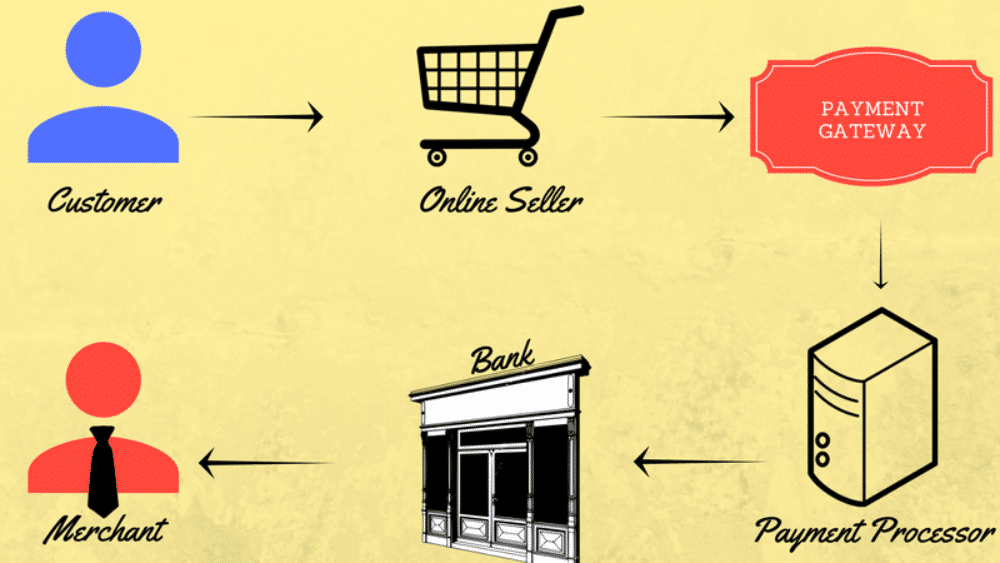
Stripe has a cloud-based infrastructure designed for reliability, scalability, and security. Not to mention, it’s very developer-centric, works for business websites and applications, and is rooted in both code and design.
In addition, Stripe can be used as a standalone solution for those needing to send out invoices and collect payments for products or services. Though this is not the most common way to use Stripe, since most people integrate into the ecommerce sites, it’s just another way to use this flexible and powerful payment gateway.
Stripe’s market share sites at around 20% putting it in second position behind Paypal (Stripe vs PayPal are always battling for the number one spot):
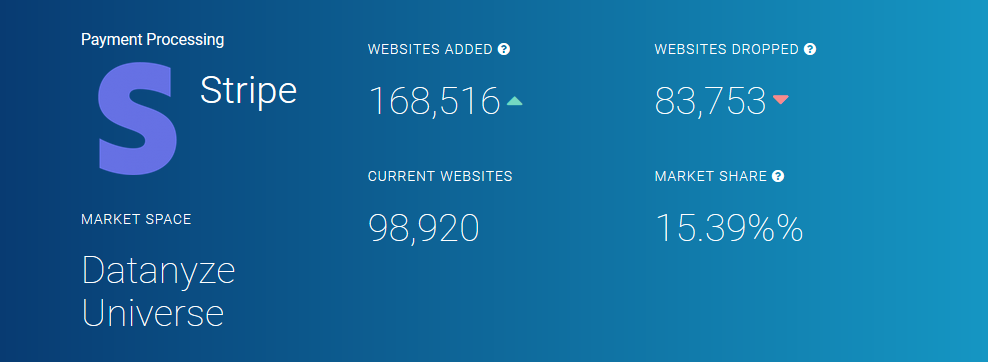
To give you an idea of how powerful Stripe is, know this: retail giants like Lyft, Amazon, and Microsoft use Stripe. Talking about companies, Kinsta uses Stripe as well.
Square, on the other hand, is a bit older (founded in 2009) and is not technically a payment gateway. In fact, it’s more of an end-to-end payment processor or virtual terminal. Plus, unlike Stripe, which can be used on any compatible platform, Square is not a standalone payment gateway solution. Instead, it comes as part of a bigger ecommerce solution.
This software is extremely versatile because it essentially turns your customers’ devices into portable point-of-sales terminals. Because of this, you’ll often find that Square’s core product is actually their in-person POS system. It gives merchants a way to collect payments from customers by reading credit cards using a smart device or by manually entering in credit card information (in-person or over the phone).
That said, over the years Square has stepped up to the plate to compete with well-established companies such as Stripe. In fact, you can now use Square to easily collect payments from customers shopping in your online store.
Stripe vs Square: Getting Set up (Ease of Use)
Stripe Setup
Setting up a Stripe payment experience on your website ranges from being super simple to super complex, depending on that you need your payment gateway to do. And this just happens to be one of Stripe’s selling points.
The developer-centric focus gives you the flexibility to create a custom checkout process for customers. With Stripe Elements, you guarantee your customers input their information quickly and correctly thanks to real-time validation, dynamic localization, autofill functionality, and improved formatting and masking.
Better yet, Stripe Elements eliminates the need for a hosted payment page on your website. Instead, just create your own checkout form or add a Stripe donate button to your site to collect money from people with ease.
If you don’t have a lot of technical knowledge or a developer on your team to help, don’t worry. To use Stripe all you have to do is cut and paste a line of javaScript to your website. And if you’re using Stripe for WordPress, all you have to do is install an open-source Stripe plugin.
Managing payments made on your ecommerce site is also simple when you use Stripe because of its intuitive dashboard:
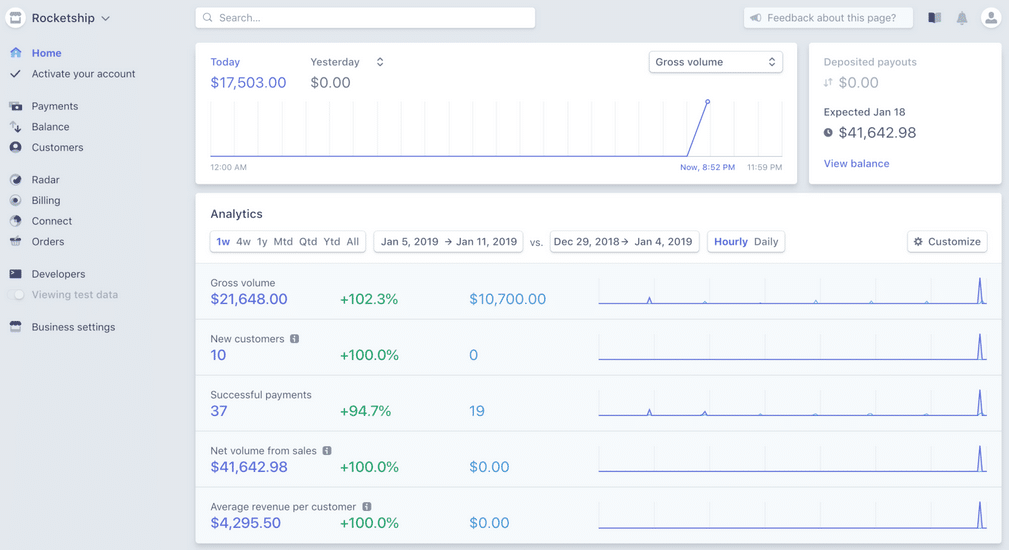
Get a quick glimpse of site activity, check real-time charts, and even see if there are any actions required by you, such as unanswered disputes or identify verifications (which is perfect for minimizing credit card fraud).
Square Setup
On the flip side, with Square everything is centered around simplicity. All the software you need to accept payments and manage your business are in one centralized system. In fact, you can access advanced reporting tools, manage timecards, and even create marketing campaigns straight from the dashboard of your Square account:
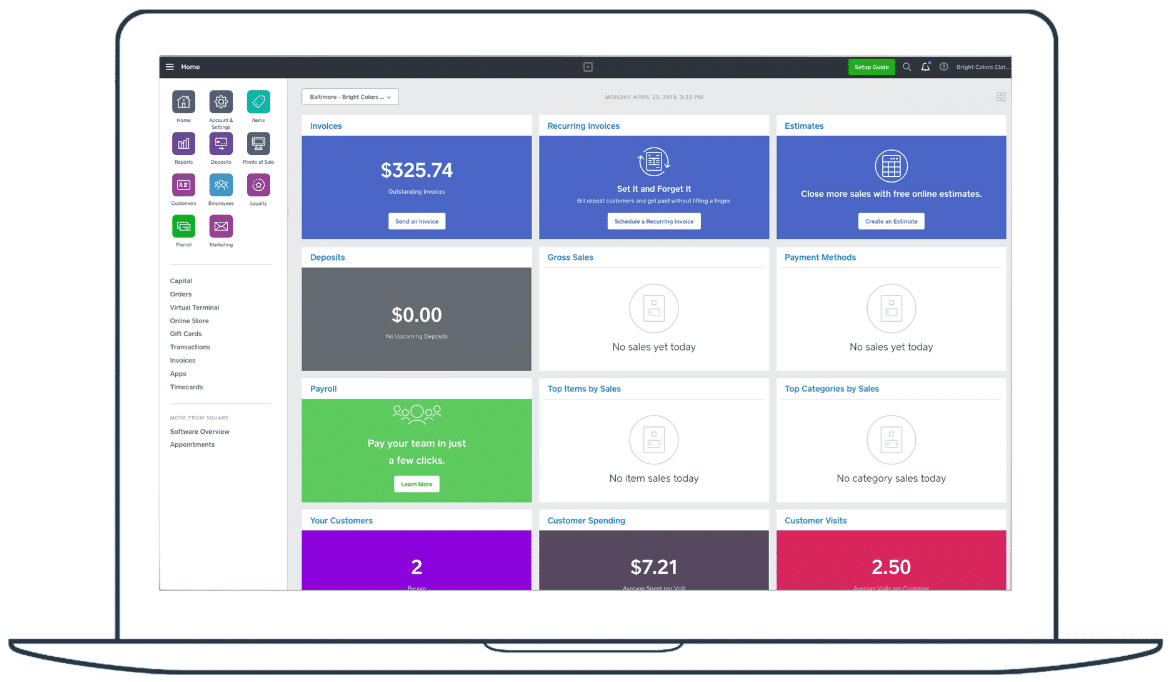
And as far as setting up Square goes, there are a few different options. To start, you can cut and paste a snippet of code (just like Stripe) and create a checkout option for customers right on your website. Or, you can use a plugin such as WooCommerce Square to extend your ecommerce platform and accept payments.
But perhaps the easiest solution is to build your very own Weebly store.
In April of 2018, Square acquired the Weebly ecommerce platform and integrated its payment gateway right into it so there is no to configure anything once your Weebly site is up and running. Unlike a self-hosted WordPress website, Weebly is fully hosted so you never have to worry about finding the right web hosting provider for your site.
Altogether, Square is a simple omnichannel solution for merchants wanting to sell anywhere without having to deal with complicated code or a bunch of third-party integrations.
Winner: Square
Stripe vs Square: Transaction Fees and Setup Costs
Stripe
The cost of using Stripe is fairly straightforward. It’s a pay-as-go platform and there are no signup fees, making it an affordable option for businesses of all sizes.
Here’s a quick look at Stripe’s transaction fees:
- Basic Transaction: 2.9% of the transaction + $0.30.
- International Transaction: 3.9% per transaction (conversion fee may apply).
- Large Transactions: discounted to 0.8% per transaction (capped at $5 – payment methods include ACH direct debit, ACH credit, and wire transfers).
For each chargeback, Stripe will charge you a $15 fee, unless the chargeback is decided in your favor. This is very competitive when compared to other payment gateways, except Square.
Square
Just like Stripe, Square doesn’t charge any signup fees or lock you into any type of contracts. Plus, they boast about not having any other kind of hidden fees either like authorization, statement, refund, PCI-compliance, business card, etc.
That said because Square provides both in-person and online transactions, as well as other business features, there are more costs associated with using them:
The following payment types will incur a 2.9% + $0.30 transaction fee:
- Square invoices.
- Online APIs.
- Online stores.
- Ecommerce card on file payments.
These payments types will incur a 3.5% + $0.15 transaction fee:
- Card on file transactions.
- Manually entered credit cards on physical hardware.
- POS API keyed-in payments.
- Manually entered credit cards online.
And, as we mentioned above, Square does not charge chargeback fees, which is rare and very appealing. Adding to that, Square offers customers Chargeback Protection up to $250 a month on qualifying transactions. This just goes to show you how much Square cares about their customers and their business.
Additional Square Pricing
Keep in mind Square does offer website owners the chance to create a Weebly store or a Square Online Store. But if that’s the route you want to take, you’ll have to pay extra.
To build an ecommerce store using the Weebly platform, Square has plans starting at $8/month. This can become more expensive as your online shop expands and you find yourself needing more functionality.
And if you want to create a Square Online Store, you can create a free store, or invest in premium plans ranging from $12-$72/month for features such as:
- Shopping carts.
- Free SSL.
- Custom domain name.
- Abandoned cart emails.
- Real-time shipping.
- And more.
Winner: Stripe
Stripe vs Square: Accepted Payment Types
Stripe
Stripe makes things easy so businesses who use Stripe don’t have to deal with additional merchant accounts. Here are the types of payments you can accept in your online shop with Stripe:
- Credit cards.
- Debit cards.
- International cards.
- ACG direct debit and credit (a feature Square doesn’t have).
- Wire transfers.
Stripe also accepts Bitcoin, which shows you that Stripe isn’t afraid to explore new areas and get involved with cutting edge technology. You can even create a Bitcoin donation button with Stripe by following a handful of easy steps.
In addition, Stripe accepts wallets such as Masterpass by Mastercard and Visa Checkout (among others). What’s great about this is the fact that Visa and MasterCard take up an impressive 80.1% of the card network.
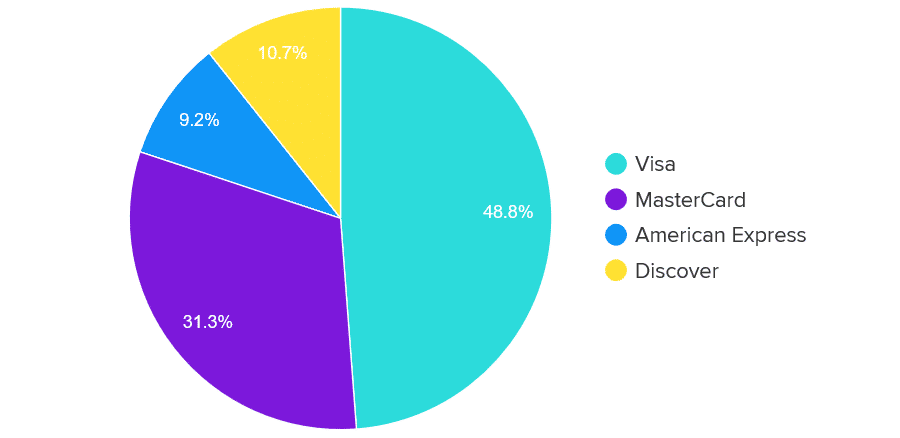
Stripe also supports over 135 different currencies, so reaching an international customer base is never going to be a problem. The only downside to using Stripe is that there is currently no way for you to accept in-person payments.
Square
The Stripe vs Square comparison has become increasingly important over the years as Square has expanded its services to meet the needs of companies that want to do business in-person and online.
Square processes all major credit cards online:
- Visa.
- Mastercard.
- Discover.
- American Express.
Plus, it will accept Apple Pay, Android Pay, and eWallet payments. One thing that Square offers customers, that Stripe doesn’t, is checkout hardware. And the best part is, the card reader and POS for accepting mobile payments in-person is 100% free.
Winner: Tie
Stripe vs Square: Quality of Customer Service
Stripe Customer Support
Stripe hasn’t always had the best reputation when it comes to customer support. In fact, before 2018, there was no way for Stripe customers to access support in real-time.
To fix this, Stripe revealed in 2018 that all Stripe customers would now have access to 24/7 live chat and phone support to complement the existing email support offered during business hours (Mon–Fri 9 am–5 pm). And if you want to get in touch with fellow Stripe users, there’s the Freenode forum (#stripe).
Now it’s safe to say Stripe excels when it comes to customer support, especially when up against Square’s level of support. And this is before you realize that in addition to extensive documentation, Stripe has a dedicated support center full of articles and videos answering your most burning support questions:
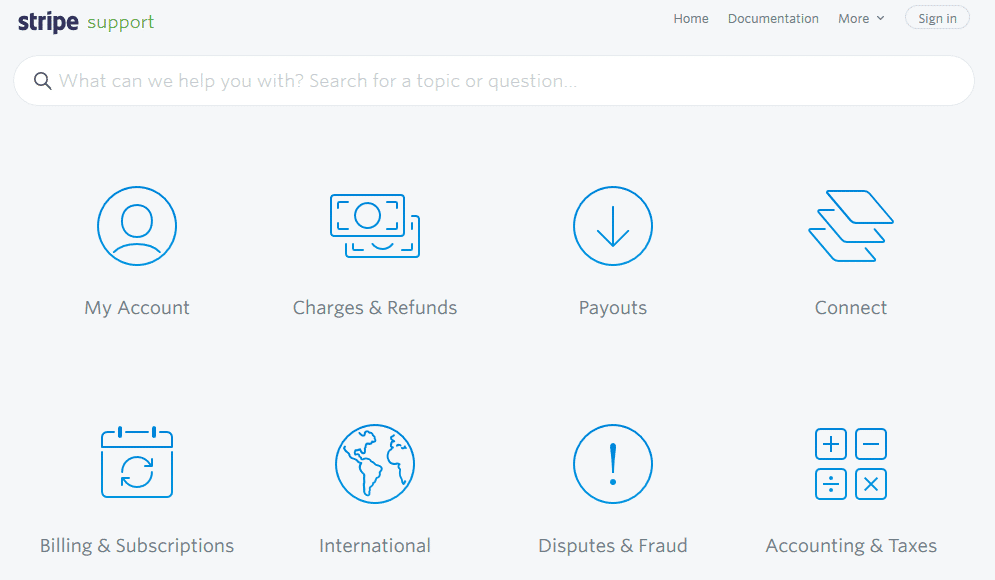
One thing that may turn some people off is the fact that Stripe also offers premium support starting at a whopping $1000/month, which is great for large businesses processing a ton of payments, and not so great for small businesses with limited budgets.
While it may not seem fair to those that can’t afford $1000/month, we feel Stripe more than makes up for it with their 24/7 live chat and phone support that everyone has access to.
Square Customer Support
Square currently offers the following support options for customers:
- Phone and email support.
- Live chat.
- Dedicated Twitter support: @SqSupport.
You can also tap into the Square Communities Forum by searching questions or keywords and networking with other Square users:

Though it may seem great on the surface, it’s worth noting that Square’s customer service is not always the best. Many people have complained about their accounts being frozen or terminated for no reason. And to make matters worse, when this happens, Square automatically cuts off your phone support and will only communicate with you via email, making it harder to resolve the issue.
Because of this, though, Square offers the same support channels as Stripe (live chat, phone, email, and even community forums), it doesn’t match the same quality that Stripe has worked so hard to establish over the years.
Winner: Stripe
Stripe vs Square: Documentation
Stripe
Stripe has very advanced and developer-friendly documentation, meaning to get through a lot of it, you’re going to need some coding, developing, or technical skills.
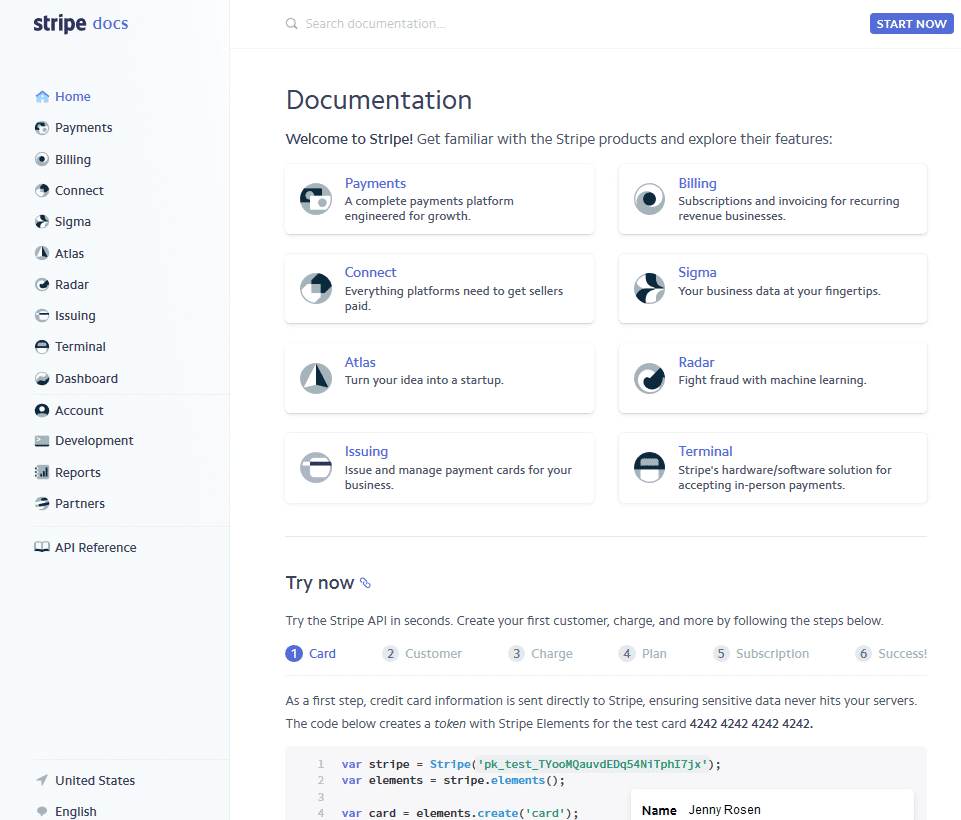
That’s not to say it’s not helpful. But if you don’t have a developer on your team (here’s where you can hire a WordPress developer), it’s likely you’ll come across something that’s hard for you to understand.
Square
On the other hand, Square sticks by the motto that everything should be simple and understandable for people of all skill levels. They have a Square Guides section with documentation to help you get started.
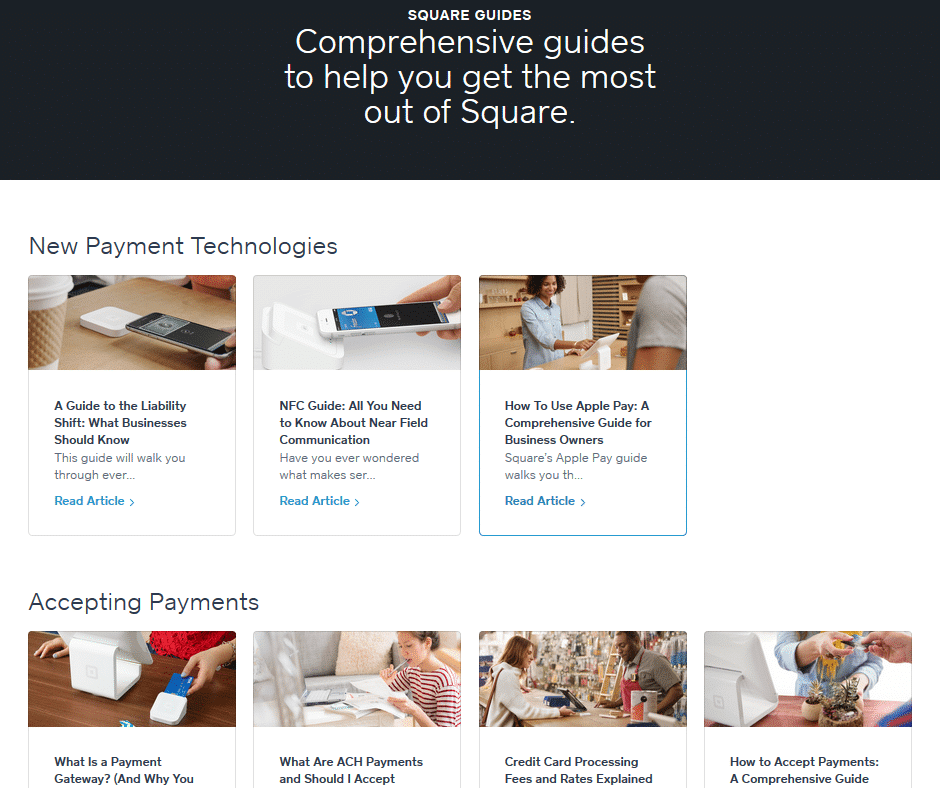
And if you’re a developer, there’s always the Developer Docs, Developer Blog, and dedicated Slack channel for developers (read: How to use Slack).
In all, Square has support for those just starting out and those that are more advanced, whereas Stripe sticks mostly to advanced documentation that helps people create fully customizable checkout experiences on their websites.
Winner: Square
Stripe vs Square: Ecommerce Integrations
Both Stripe and Square have ecommerce plugin integrations that work with popular ecommerce platforms. They also have an open API and developer’s tools, though Stripe’s are more advanced, come with more features, and include resources for building completely customizable checkouts.
But that’s where the similarities tend to stop.
Stripe
Stripe is very versatile, despite not having the same features as Square. For instance, it integrates with dozens of shopping carts including Easy Digital Downloads, Ecwid, and X-Cart. It also works with a variety of ecommerce platforms such as Squarespace, Shopify, and Shopify alternatives like WooCommerce.
Since Stripe was designed with online sellers in mind, it can connect to virtually any type of website, online sales platform, or ecommerce platform. And with over 98 apps to enhance the payment process, it’s only with Stripe that you’re going to truly be able to scale your online shop.
Stripe and WordPress/WooCommerce
Stripe doesn’t have an official WordPress plugin or integration. But there are plenty of plugin developers in the WordPress community who have made integrating Stripe into a WordPress site a cinch.
Here are some common ways to set up Stripe for WordPress:
- As a one-off payment page on a basic WordPress site that doesn’t have ecommerce functionality.
- Using a form plugin such as Gravity Forms to collect payments, deposits, or donations.
- Free with your WooCommerce site.
- With Easy Digital Downloads, a popular platform for those selling digital products.
Square
Square is the only payment gateway with a free online store feature that automatically connects to Square payments. It is also the only option that partners with an ecommerce platform (Weebly) and delivers Square payments with the platform for people to use.
Square is meant to be an omnichannel solution that includes ecommerce functionality. And while you can’t customize as many things as Stripe allows, Square is both beginner-friendly enough for anyone to use and advanced enough that developers or large corporations can take advantage of it as well.
Square integrates with Wix, Weebly, Ecwid, BigCommerce, and 3dcart for those just starting out. And for those that need more, Square works well with Drupal, WooCommerce, Magento, and custom-built websites.
Square and WordPress/WooCommerce
Square boasts an easy integration into your existing WordPress.com website. To get started, all you have to do is have a premium Business WordPress.com plan (starting at $25/month) and use any Square-supported ecommerce plugins for WordPress such as WooCommerce or WP EasyCart.
If you have a self-hosted WordPress.org website, you can also integrate Square into your online shop, much like you would with Stripe. For example, WooCommerce Square will give you the best way to sync inventory and product data between WooCommerce and the Square POS.
In the end, if you’re a multichannel seller, Square wins. If you’re an online-only business, Stripe wins because it accepts more payment types and supports more currencies.
Winner: Stripe
Stripe vs Square: Pros and Cons
Stripe
Pros
- Transparent, flat-rate, and competitive pricing.
- Global scalability and reach.
- No monthly contracts.
- Completely customizable checkout solution.
- Customers never leave your site to finalize purchase.
- Multiple support channels, some available 24/7.
- Full PCI compliance.
Cons
- Many complain about slow email response times and other customer support issues.
- Chargebacks not settled by Stripe and cost money if you lose the dispute.
- Steep learning curve for those with limited technical knowledge.
- Not suitable for high-risk businesses.
Square
Pros
- Very user-friendly especially.
- Perfect for those looking for an omnichannel payment solution.
- Ideal for low-volume merchants.
- Very competitive pricing, including Chargeback Protection.
- Unique ecommerce solutions.
Cons
- Lots of complaints about terminated accounts without notice.
- Lack of features, specifically subscription tools.
- Not suitable for high-risk businesses.
- Pricey for large companies doing a lot of business.
Stripe vs Square, Which One Is Better?
Because the payment gateways are so similar until they’re not, it’s tough to call out a clear winner when it comes to Stripe vs Square:
- If you need the flexibility to sell online and in-person, Square wins by far with its omnichannel features.
- If you need a strictly online solution that can scale globally or a standalone invoice/payment collection solution, Stripe gets the number one spot.
Summary
Choosing the right payment gateway is not an easy choice. And with Stripe vs Square being such a close call, it’s going to come down to individual features to help you make your final decision.
If you’re new to running an online store and have limited technical knowledge, Square is going to be the better option. It’s priced competitively when compared to Stripe and comes with an easy setup process and beginner-friendly documentation to guide you.
However, those in search of a more customized checkout process, Stripe is going to be your best route. If you run an ecommerce shop that relies on volume, you’re going to need every feature you can get to expand your business and secure more sales. This means a global reach, access to 24/7 support, and the flexibility to add the Stripe payment gateway to any website or platform you choose with ease.


